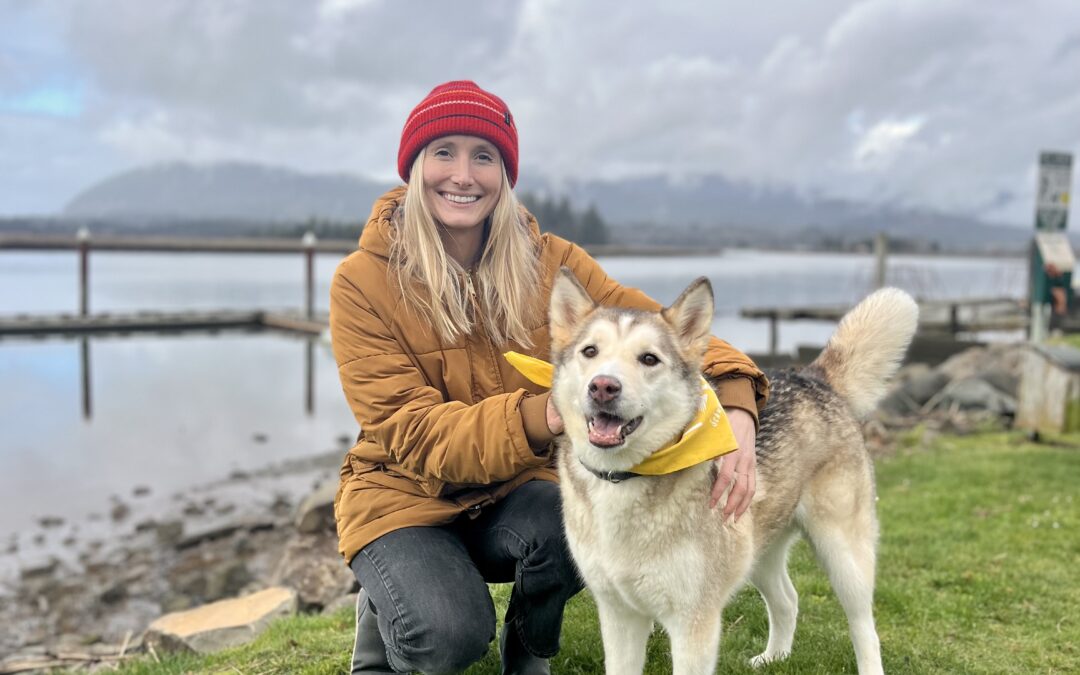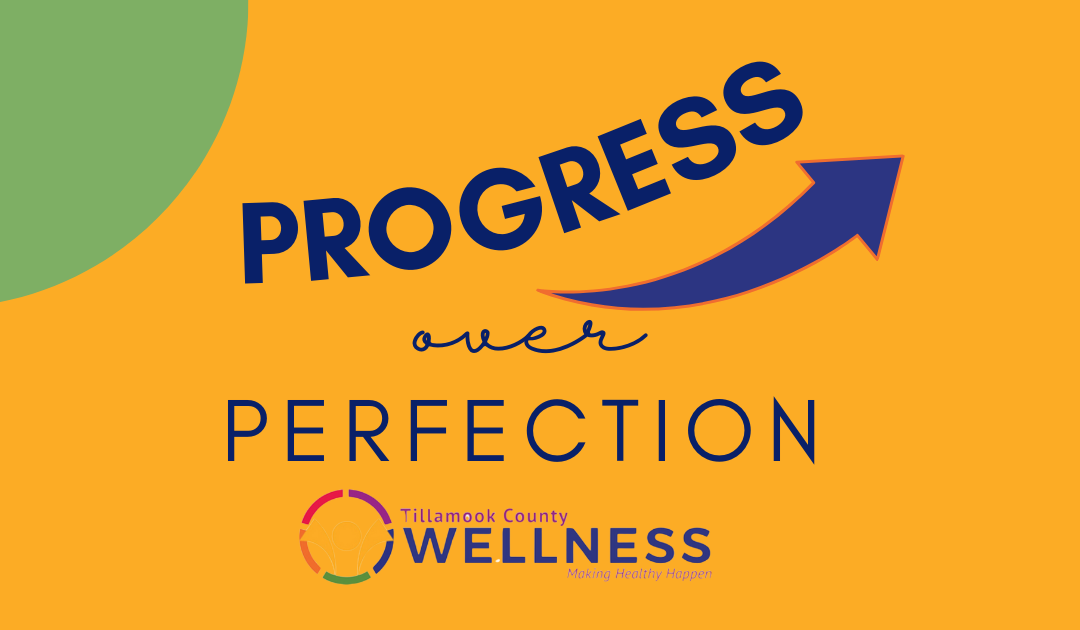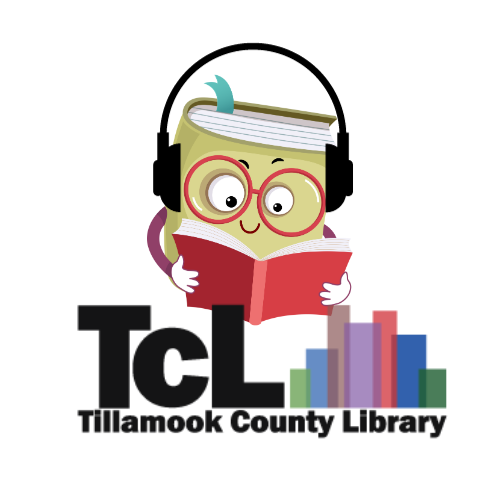
by Guest | Feb 28, 2024 | Being Well, Featured, Move Well
Greetings Everyone! My name is Stephen Mintie and I live in Tillamook with my wonderful wife. I’ve gotten to know a lot of people in the area in the short time I’ve been here which is partially due to my endeavors in amateur videography. This allows me to be a visual storyteller in how I share my life. People regularly get to see a rich personal life I’m very grateful for that includes paragliding, hiking, community involvement, dining with my wife, and various adventures. What they don’t know is that I’ve had some times in my life of deep despair that has translated to some heavy anxiety and depression that still impacts me to this day and it has affected my physical health as well.
We all face different circumstances and traumas. We all process information and are motivated differently. Our tolerances vary as well. With that said, here are some things that have helped me pull out of my moments of weakness and pain though it is still very much a work in progress.
Light exercise goes a long way! A job of a physical nature or hobbies can help. There was a time I didn’t have either. I elected to do some sit ups, push ups, and a light jog a few times a week. After about a month and a half, I was improving. The biggest benefit was that physical activity led to better mental strength. Exercise does not need to be about vanity, it only takes a little work consistently for your mind and body to reap the rewards. When the chips are down, you need all the cards you can get in your deck.
What you put into your body matters. For a long time I was eating a frozen pizza for dinner late at night while washing it down with copious amounts of beer. This absolutely set me back pretty hard. I started developing what felt like an allergy to what I thought was gluten which has since subsided as I’ve changed this habit. The way I went about this was I started eating healthy foods such as greens and vegetables during the day. I felt it was easier to do during my working hours when I wasn’t chasing food for comfort. In the evening, I learned how to take healthy ingredients, but make it into something that tasted satisfying. I was able to feed the habit, and the habit didn’t know it was good for me. – Alcohol doesn’t serve anybody when things are hard. It’s a depressant and after a drink or two, it’s essentially poison. Do I still drink? Yes. Would I benefit from abstaining altogether? Absolutely. I wasn’t going to stop though, but I was thoughtful about its impacts. I stopped buying hard liquor in stores and stuck with low ABV beer. These days I have a pretty set limit of how much I’ll drink, but I wouldn’t consider it to be within healthy ranges. Remember, if your mind is hurting, alcohol is your enemy. A few hours of feeling good is only borrowing a few hours of happiness that has to be repaid back times 4.
Focus on growth rather than goals. You can fail while growing and even if you hit goals, you still will want to continue growing. Growth means that you don’t stop trying. Growth also means pursuing things that fill your personal cup and provide you with more mental stamina and relief. This varies wildly from person to person. Comparing yourself to others hinders growth.
In a world filled with people who are healthy and sick, rich and poor, only your story matters because it’s your health and mental well being on the line. We should absolutely care and empathize with others, but you can help people a lot more if you are happy and healthy. Growth also doesn’t have to be solely related towards eating right and exercising. The happiest people out there are also the most gracious. Grow in gratitude, be kind, and help others. Life is full of pain and disappointment for many. Think of ways to put a smile on somebody’s face. If you feel rudderless without direction, sometimes all you can do is your best. If you can’t find the light, be the light!
Lastly and while this applies to everyone, I’m really speaking to the men out there. Don’t be afraid to say something if you’re hurting. Some of my best pals and I talk about it all the time. It makes us human and relatable. I’ve made more friends in my life being open, honest, oftentimes self deprecating rather than bragging or making it seem like everything is in order. At the end of the day you are not alone. Life is not meant to be lived in quiet desperation and nothing changes if nothing changes. Regardless of your self esteem, say to yourself “I want to feel good, I want to be ok, and I would like to be happy too.” After that, start thinking about little things you are capable of doing every day consistently that will help you head in that direction. The time of my life where I started doing these things was a time I did not have hope whatsoever. I couldn’t see the way out, but I knew if I didn’t try the basics, I was going to sink. While I am a very lucky man now, I often think, “wow, there were so many times I just wanted to give up, and if I had, I would have had none of this.”
Don’t ever give up and remember, there’s a trick to eating an elephant, you have to take small bites.

by Guest | Feb 20, 2024 | Being Well, Eat Well, Featured, Uncategorized, Why I'm In, Work Well
“WHY I’M IN …” An interview with Mari Tasche, Oregon Health & Science University
What drew you/your organization to partner with Tillamook County Wellness?
When first introduced to Tillamook County Wellness, I was inspired by the work of the committees and felt that TCW aligned with my passion for improving the wellness and quality of life of others, particularly those made vulnerable by current systems. I have always been actively involved in my community, whether coaching youth soccer or coordinating a community-wide couch to 5k running group. As an exercise physiologist looking to transition into public health and plant my roots on the north coast, TCW provided a great opportunity to understand the region’s needs and get involved in efforts to address community health.
What, if any, changes have you seen come about as a result of this work?
Improving the health and wellness of a county is challenging work and truly takes a village. TCW is a unifying force that brings people and organizations together to share knowledge, leverage resources, and provide support. This strengthens our connections, creates unity, and fosters collective progress for the betterment of our community. I have seen many organizations coordinate and collaborate on projects, programs, and initiatives they might not have otherwise pursued together. This coalition has also taken ownership of the community health needs assessment and improvement plan to address the region’s top health and social needs. Efforts include evaluating and refocusing the work of committees, pursuing or supporting grants, establishing or strengthening partnerships, and broadening community outreach and engagement.
What have you learned from being involved in this work?
I have learned that opportunities are endless if you make the effort to reach out. Many people want to see this county thrive and want to contribute their part to make that happen. It is inspiring and fuels my optimism for this work. I have also learned that this work is like climbing a mountain with no top. It’s endless, but if you enjoy what you are doing, it doesn’t feel like a daunting task- and don’t forget to celebrate the small steps!
What are your hopes for this work as it relates to you/your organization?
My role has continued to evolve since joining a few years ago, and I strive to find my niche and how to best contribute my time and resources to TCW. As I wrap up my master’s degree in public health this fall, I am looking to align my final projects with TCW initiatives and develop relevant content and materials to drive this work forward. As a regionally based employee with the Oregon Rural Practice-based Research Network at OHSU, I aim to pursue future opportunities for cross-over and collaboration.
What are your hopes for this work as it relates to changing community health in Tillamook County.
Changing community health takes a multifaceted and dynamic approach. I hope that TCW continues to address this challenge holistically by strengthening a diverse network with a unified message, comprehensive strategy, and county-wide framework that can meet the needs of every individual and help them live their best, healthy lives.
Is there anything else you’d like to share?
I appreciate being a part of this coalition and look forward to what we can accomplish in the coming years.
For more local health and wellness information, visit www.tillamookcountywellness.org or follow Tillamook County Wellness on Facebook and Instagram.

by Guest | Feb 12, 2024 | Being Well, Featured, Uncategorized, Work Well
By Guest Author: Emery Edwards
I’m a perfectionist. I always have been, and I probably always will be in some capacity. So, my health improvement journey has been a struggle. Somewhere in the 21 years before I started trying to change my life, I had gotten this idea that if I couldn’t do it perfectly the first time, I couldn’t do it at all. I’m sure some of you have felt similarly, especially when it comes to your health. There have been countless times where I’d stuck to my goals for a week or two, but I am inevitably confronted with a birthday party, a night out, or anything that might challenge your newly formed habits. I’ve always felt it’s a zero-sum game- I default on my healthy habits one time, and my progress is null, and I might as well give up. Many of us who have embarked on the journey of improving holistic health have experienced this, and it’s okay. What will be more damaging than one day, one week, or one month of falling back, is if you believe that the progress you’ve made up until that point means nothing because you weren’t perfect.
This is where progress over perfection comes in. Recognizing that you are making progress, but you’re not perfect, is the way I’ve been able to transform my habits over the last 6 months. Instead of chastising myself for not exercising one day or eating something that does not serve my body, I recognize that overcoming these habits is a longer journey than I had been led to believe. Crash diets, unrealistic societal expectations, ‘lose weight quick’ schemes, and the like have warped my thoughts about health for a decade, and I know I’m not alone in this. If it has been instilled in you for so long, it will inevitably take more than a couple months to fully change your mindset. Giving yourself grace in this journey of feeling better is more important than absolute perfection. But you must want to feel better to make these changes sustainable.
It takes dedication to make that progress and change your lifestyle. I started with upping my fiber and protein intake through whole foods and reduced the simple carbohydrates and sugars in my diet. It took me mere weeks to feel more present in my body, have more energy, and improve my sleep quality. It took me months, however, to make these practices a daily habit. Instead of giving up when I gave in to the residual cravings, I would wake up the next day and continue with the goals I had been working towards. My world does not stop when I eat a chicken strip, and I promise that yours doesn’t either. Maybe pair that chicken strip with some roasted vegetables like brussels sprouts, broccoli, or a simple garden salad to make it more nutritious. It’s all about adding what you need to satisfy the craving in a healthier way, and after you eat it, move on to meeting your goals. The name of the game is progress, not perfection. But when I tell you, I went from needing a nap in the middle of the day to function to having the energy to take me through the entire day without a yawn, I am telling you the truth.
I am only 6 months into my progress over perfection journey, so I’m no expert. But what I will say is I have never in my life felt as good as I do today, and every day gets even better. I started with my eating because I had no energy to introduce exercise into my routine, now I have too much energy to sleep if I don’t exercise. It’s a beautiful problem to have. I would not have gotten this far if I had given up the first time that I ate something I told myself I wouldn’t. Which probably happened within a week of starting the journey if I’m honest. The name of this game is grace- give it to yourself, to others, and remember that it’s all about your overall progress, not being perfect.
For more local health and wellness information, visit www.tillamookcountywellness.org or follow Tillamook County Wellness on Facebook and Instagram.

by Michelle | Feb 5, 2024 | Being Well, Featured, Work Well
At the start of a new year, many of us think about restarting exercise regimens, meal prepping and other weight-loss oriented goals. While losing weight is good for our self-image and our health, it can often be difficult to achieve. If we aren’t successful, it can cause us to “throw in the towel” – at least until the start of the next new year. What if there are other pathways to become healthier, happier versions of ourselves?
What is often overlooked is that our health goals are usually more about how we feel than how we look. We want to be able to do the things we used to do, be happier, have more energy and a greater sense of meaning in our lives. While running a 5K or eating the recommended daily servings of vegetables will help us achieve those goals, there are other ways we can get there.
Think back to when you were 7, 11, or 20 years old. What brought you joy? Were there hobbies or activities you enjoyed doing, that made you feel good about yourself; where you got to put your unique skills to the test, or share your gifts with others? As a child I loved reading and journaling from a very young age. By the time I graduated from college, I had abandoned both of those pastimes. I simply hadn’t had time between going to school and working full time. Once I began to reintroduce those activities, I felt my old self coming back. And that prompted more awareness of what I needed to feel fulfilled. And what was draining my energy.
Maybe it’s time to get out your golf clubs, tune that instrument or dust off your art supplies. Or, maybe this is the time to make your someday start today. What is the thing you have caught yourself saying multiple times? “Someday I am going to ‘do the 52 hikes challenge,’ or ‘grow a vegetable garden’ or ‘learn how to crochet.’” There are free, local resources to help you get started with all of these activities. Our local library system offers Mango, a free language learning app. They even have a “library of things,” like binoculars to go bird watching or tools to start that woodworking hobby. The possibilities are endless.
I know what you’re thinking. This is all well and good but I do not have time for such frivolities. The truth is that most of us are spending at least some of our disposable time on social media, streaming, or watching television. If we reprioritized 30 minutes a day of time spent doing passive activities and dedicated it to pursuing a hobby, we could experience significantly more joy and meaning in our lives.
Here are a few tips for success:
- Conduct an inventory of your favorite hobbies, past and present
- Consider what you could realistically reintroduce into your current schedule
- Notice activities others do that you admire or find yourself being curious about
- Research what it would take to start a new activity and break down the process into small, manageable chunks (for example, if you want to learn to crochet, reach out to Latimer Quilt Factory and ask about lessons, groups, mentors or other ways to get started)
- Schedule time for your hobby/activity so you are more likely to keep it a priority
- Invite a friend to join you
- Share your favorite hobbies on social media or at info@tillamookcountywellness.org
Written by Michelle Jenck, M.Ed., Certified Behavior Change Coach & Tillamook County Wellness Coordinator
For more local health and wellness information, visit www.tillamookcountywellness.org or follow Tillamook County Wellness on Facebook and Instagram.

by Michelle | Jan 25, 2024 | Being Well, Featured, Move Well, Uncategorized, Work Well
Intro to Behavior Change, Part 1
Every day we hear the results of another study, telling us what is making us unhealthy. Eat this, don’t eat that. Move like this, not like that. There are, of course, good reasons to become educated about making healthier choices. We are on an unsustainable track both for our own health and for the economic health of our nation. In all reality, our health care crisis – the skyrocketing cost to treat preventable, chronic disease – is a greater threat to our survival than global climate change. As with all things, though, we have made the solution far too complicated for the average person to comprehend.
Let’s get down to the fundamentals. First, we simply have to become more aware of our own habits. How do I feel when I eat this and don’t eat that? How do I feel when I walk up a flight of stairs? How much energy do I have? If the answers to these questions are not the ones you’d like, then it is probably time to start making some changes.
Change is hard. Crazy hard. It’s really inconvenient. That’s how we got into this mess in the first place. It is human nature to take the path of least resistance. It takes time and effort to change the way we live our lives. For most of us, this is where we end up – in a state of knowing we need to do something but not believing that we can really do anything about it. To be successful, we need to make the changes to our habits small, easy-to-adopt, and enjoyable.
Behavior Change 101, Part 2
Awareness. This is where it all starts. We have to stop and look within ourselves to even begin to understand what is and isn’t working. This goes for health and nutrition but also for relationships, self-esteem, work performance, you name it. What is the famous saying? The first step is admitting you have a problem.
You don’t have to become a Yogi (yoga instructor, not the bear) to become aware. You don’t have to take special classes (although that might help). You don’t have to change the kind of person you are (although you probably will in the end). You just need to be open to the idea of changing.
We see things more clearly when we take a step back and give them our undivided attention. Take a few moments each day to breathe. Just be. Relax. In doing so, the busyness of the world, the noise of our self-talk, the daily to do list, they all disappear and we are simply left with ourselves and the truth. Layers of thought, emotion, and even traumatic events are often responsible for the “dis-ease” that causes disease. Without going through this process, it may not matter what changes we make to our nutrition or exercise habits. Our bodies seek balance. This applies to our emotional state as well. When we are out of balance, there are a whole host of physiological processes that go off-line as well.
Unfortunately, the typical American lifestyle does not lend itself to mind-body balance. It can seem overwhelming to understand what is out of balance and what we need to do about it. This is where awareness is key. At some point, most of us have tried to determine how many calories, grams of protein, fats or carbohydrates or how many minutes of high or low intensity exercise we should be getting each day. And, statistics show that this hasn’t worked out so well for most of us . . . at all.
So, how do we identify and make the changes we need to make? Pay attention to your own body and mind. What you think and feel, what you read, and what you hear others say all provide clues if you are tuned in. Listen to that voice in your head, that gut instinct that kicks in and says, “Hey, that’s what I need to do. I can do that.” I call it the When-Harry-Met-Sally-Moment – “I’ll have what she’s having.” Pay attention to what inspires you and follow that thread.
Tips for Successful Behavior Change, Part 3
Why we want to make changes is almost as important as what we want to change. The “why” often determines our chances for success. If we are making a change for our spouse or boss, or as a quick fix (think high school reunion), we might not be as emotionally invested as we need to be successful over the long term. You need to have good reasons to make any lasting change. Maybe it is to be around to see your kids or grandkids grow up or maybe it is about improving your quality of life. Whatever it is, it needs to be meaningful to you.
Setting SMART goals is key to successful behavior change. SMART is an acronym for research-based characteristics that significantly increase the likelihood of reaching one’s goals. They should be:
- Specific
- Measurable
- Attainable
- Relevant
- Time-Bound
For example, if I want to walk 2 miles a day but am currently completely sedentary, I need to break down my goal into manageable pieces. I also need to be realistic. How far can I, and more importantly, will I, walk each day. Maybe it is just a daily walk to my mailbox for the first week. Then, I can walk to the end of the block, then 3 blocks, and so on until I have achieved my goal. It is important to set a time frame for each level of goal attainment. This can be daily or weekly. It needs to be short enough to generate immediate success but also long enough to form a new habit as a foundation for the next step and that usually takes about 8-10 weeks.
Work with your strengths and interests when approaching changes. If you like to cook, then it makes sense to find healthy recipes you would enjoy making. If you hate cooking, it will be important to simplify what nutrition changes you are making so that you can still be successful. It can be as simple as choosing the prepared veggie tray and a container of hummus from the grocery store. This principle is especially important when it comes to physical activity. If you enjoy being outdoors, consider walking or hiking. If you like people, music or dancing, you could join a group fitness class. If you want something more mindful, try Tai Chi, Qigong or Yoga. The key is to look for ways to integrate a positive, healthy change with your personality, interests and strengths.
One of the reasons people struggle with behavior change is because they have been unsuccessful in the past. Three common reasons for this are 1) Setting unrealistic goals 2) Giving up after the first setback, or 3) Taking on too many changes at once.
To avoid these, it is important to set a narrow list of ridiculously small goals. This allows us to celebrate mini victories which perpetuate future successes. BJ Fogg, a researcher at Stanford University, calls these “Tiny Habits.” He uses an example for someone who wants to develop the habit of flossing their teeth. He suggests flossing one tooth each night after brushing your teeth. Just one tooth. This is based on the fact that a 3 second action of flossing one tooth is perceived as much more doable than the 30 second action of flossing all of our teeth and, therefore, we are more likely to stick with and succeed at the development of this new habit. As sad as this example is, he is 100% right (and he has the research to back that up.) This says a lot about human nature and explains a lot when it comes to why behavior change is so difficult.
To summarize, there are some tricks to successful behavior change:
- Become aware of what you want to change and why
- Set SMART goals
- Make changes that fit your personality, strengths and values
- Start small (REALLY small) and build on your successes
Written by Michelle Jenck, M.Ed., Certified Behavior Change Coach
For more local health and wellness information, visit www.tillamookcountywellness.org or follow Tillamook County Wellness on Facebook and Instagram.

by Guest | Jan 5, 2024 | Being Well, Featured
Entertainment, as with other expenses, has inflated in price. Over the past six years, Netflix has bumped its prices by $7. Disney+, in just its fourth year, is 40% more expensive than when it launched. Many streaming services have ad-supported plans, but they come with limited simultaneous screens, poorer visual quality, and lock originals behind ad-free tiers. Audiobook services, such as Kindle, face similar price hikes, and the subscription is only an entry fee as titles need to be purchased separately.
Historically, libraries have offered Americans free and accessible entertainment. Even today, your local branch will have complete seasons of Prime and HBO originals on DVD. Consumers, however, have been gravitating to digital means, with many lacking a DVD player or even a TV. Convenience is the name of the game, and libraries, with late fees, limited rental periods, and process of picking up items, have deterred many away from its offerings. Recently, the Tillamook County Library system has evolved to keep pace in the digital age and remove barriers to expand access.
The big change has been embracing streaming within the Hoopla app. A free download that just requires your library card number, Tillamook County residents can enjoy up to 20 titles per month, all completely free. Hoopla is available on both app stores and Amazon Firesticks. The catch is that a “title” will refer to any audiobook, graphic novel volume, film, a single episode of TV; so not everything is equal value. Like libraries, Hoopla does have a time limit, ranging from two to twenty days depending on the form of media. Still, this is not made up of obscure titles. Many high-profile authors, bestsellers, Marvel/DC comics, and notable films are available here.
If you’re still willing to rent physical media, many hindrances have been removed for accessibility. Late fees aren’t charged; at worst you’ll just get a phone call reminder after a month or so. Titles may be reserved on the library webpage by simply typing the name of the work or author in the search bar. The scope of the library’s collection is not to be understated. There are as many manga titles as a Barnes and Noble store and the latest bestsellers are added almost immediately upon release.
The library is still a vital resource for entertainment and a good way to cut back on non-necessities when dealing with a tight budget. Through it, I’m able to save hundreds of dollars and space in my apartment because I don’t need to buy everything. If you are like a lot of us, trying to cut back on expenses, look no further than your local library branch.
Guest Author: Andy Jenck, Local movie reviewer
Other wellness questions? Email us at info@tillamookcountywellness.org. For more local health and wellness information, visit www.tillamookcountywellness.org or follow Tillamook County Wellness on Facebook and Instagram.






